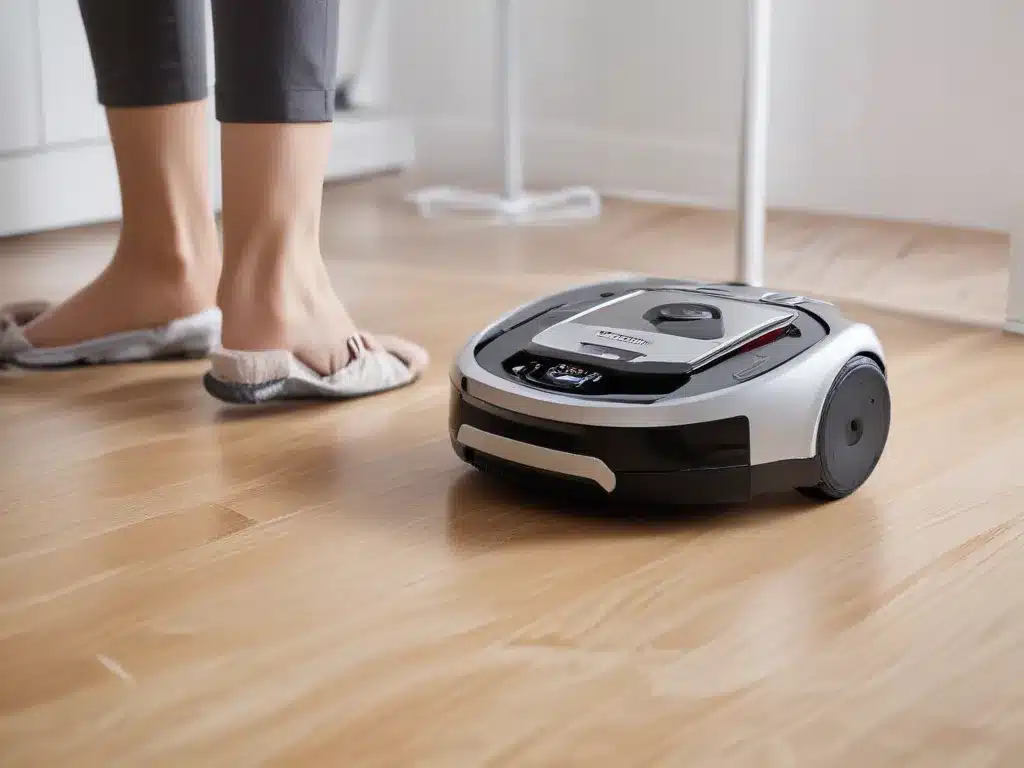Introduction
As a homeowner or a professional cleaner, I have faced the dilemma of choosing between a handheld vacuum and a robotic vacuum. Both options have their unique advantages and disadvantages, and the decision ultimately depends on your specific needs and preferences. In this article, I will dive deep into the world of handheld vacuums and robotic vacuums, exploring the pros and cons of each, to help you make an informed choice.
Handheld Vacuums
Handheld vacuums are compact and lightweight devices designed for spot cleaning and tackling hard-to-reach areas. Let’s explore their advantages and disadvantages.
Pros of Handheld Vacuums
- Portability: The compact size and lightweight nature of handheld vacuums make them easy to carry around and maneuver in tight spaces.
- Versatility: Handheld vacuums are versatile tools that can be used for various cleaning tasks, such as cleaning upholstery, car interiors, and even hard-to-reach crevices.
- Quick and Efficient: With their powerful suction, handheld vacuums can quickly and efficiently clean up small messes and spills.
Cons of Handheld Vacuums
- Limited Capacity: Handheld vacuums have smaller dust bins, which means you’ll need to empty them frequently during extended cleaning sessions.
- Limited Power: While handheld vacuums are designed for spot cleaning, they may not have the same suction power as full-size vacuums, making them less effective for deep cleaning carpets or large areas.
- Shorter Battery Life: Many handheld vacuums are cordless and run on rechargeable batteries, which can limit the cleaning time before needing to recharge or replace the batteries.
Robotic Vacuums
Robotic vacuums, also known as robot vacuums or autonomous vacuums, are advanced cleaning devices that navigate and clean floors autonomously. Here are their pros and cons.
Pros of Robotic Vacuums
- Hands-Free Cleaning: Robotic vacuums can clean your floors without any manual effort, freeing up your time for other tasks.
- Scheduled Cleaning: Many robotic vacuums can be programmed to clean on a schedule, ensuring consistent maintenance of your floors.
- Efficient Navigation: Advanced robotic vacuums use sensors and mapping technologies to navigate your home efficiently, avoiding obstacles and covering every corner.
- Low Maintenance: Robotic vacuums are designed to be low-maintenance, with self-cleaning features and automatic docking for charging.
Cons of Robotic Vacuums
- Initial Cost: Robotic vacuums can be more expensive than traditional vacuums, especially for high-end models with advanced features.
- Limited Cleaning Capabilities: While robotic vacuums are effective for maintaining floor cleanliness, they may not be as thorough as manual vacuuming, especially in high-traffic areas or for deep cleaning.
- Navigation Challenges: Robotic vacuums can sometimes struggle with navigating complex floor plans, stairs, or cluttered areas, leading to missed spots or getting stuck.
- Noise Level: Some robotic vacuums can be louder than traditional vacuums, which may be disruptive if you’re working from home or have young children.
Comparison Table
To help you visualize the differences between handheld vacuums and robotic vacuums, here’s a comparison table:
| Feature | Handheld Vacuums | Robotic Vacuums |
|---|---|---|
| Portability | High | Low |
| Versatility | High | Low |
| Cleaning Power | Moderate | Moderate |
| Capacity | Small | Large |
| Battery Life | Short | Long |
| Hands-Free Operation | No | Yes |
| Scheduled Cleaning | No | Yes |
| Navigation | Manual | Automatic |
| Maintenance | Moderate | Low |
| Noise Level | Moderate | Moderate to High |
| Initial Cost | Low | High |
Real-Life Examples and Interviews
To provide a more practical perspective, let’s explore some real-life examples and interviews from users of both handheld vacuums and robotic vacuums.
Handheld Vacuum User Experience
Sarah, a busy working mom, shared her experience with a handheld vacuum: “As a parent of two young kids, spills and crumbs are a daily occurrence. My handheld vacuum has been a lifesaver for quickly cleaning up messes before they become a bigger problem. It’s lightweight, easy to maneuver, and powerful enough to tackle most small messes.”
Robotic Vacuum User Experience
John, a tech-savvy professional, shared his thoughts on his robotic vacuum: “I’ve always been fascinated by smart home technology, and my robotic vacuum is one of my favorite gadgets. It’s incredibly convenient to have it automatically clean my floors while I’m at work or running errands. The mapping and navigation features ensure that it covers every corner of my home, and the self-charging feature means I never have to worry about it running out of battery.”
Conclusion
In conclusion, both handheld vacuums and robotic vacuums have their unique advantages and disadvantages. Handheld vacuums are portable, versatile, and great for spot cleaning and hard-to-reach areas, but they have limited capacity and power. On the other hand, robotic vacuums offer hands-free, scheduled cleaning and efficient navigation, but they can be more expensive and may have limitations in cleaning capabilities and navigation challenges.
Ultimately, the choice between a handheld vacuum and a robotic vacuum depends on your specific cleaning needs, budget, and preferences. If you’re looking for a convenient solution for quick cleanups and spot cleaning, a handheld vacuum might be the way to go. However, if you value the convenience of hands-free, scheduled cleaning and don’t mind the higher initial cost, a robotic vacuum could be a game-changer for your cleaning routine.
Remember, both options have their strengths and weaknesses, so carefully consider your priorities and evaluate your cleaning needs before making a decision. Whether you choose a handheld vacuum or a robotic vacuum, the key is finding the right tool to make your cleaning tasks more efficient and enjoyable.







